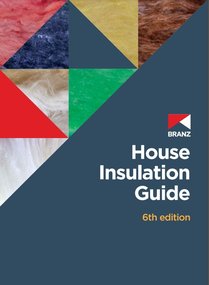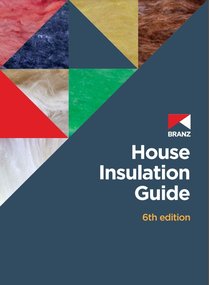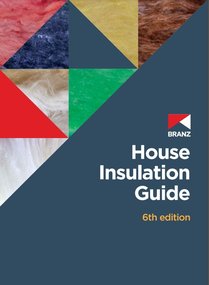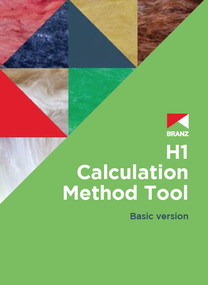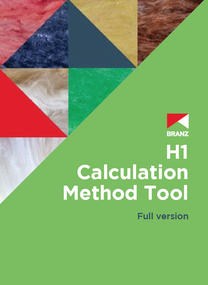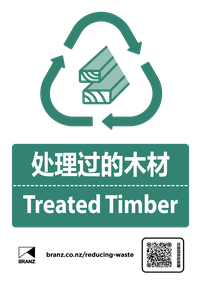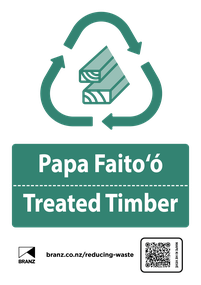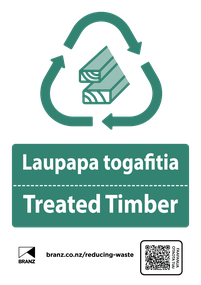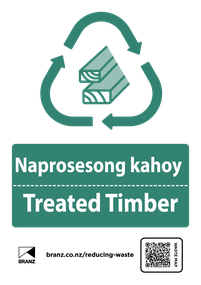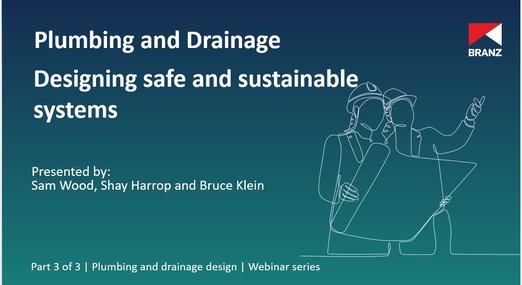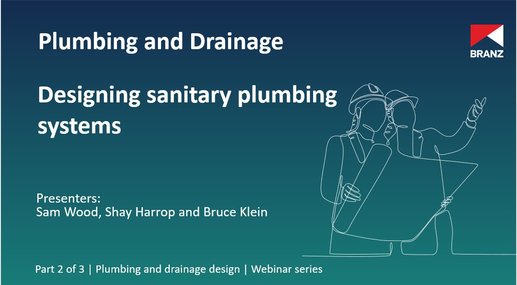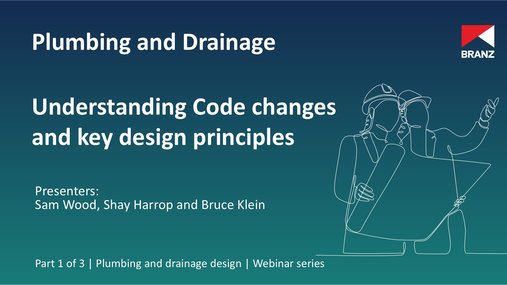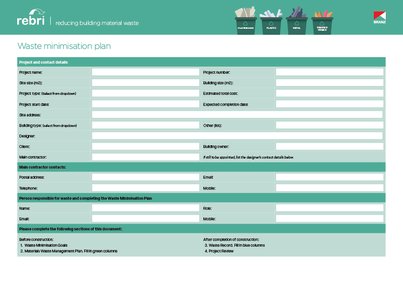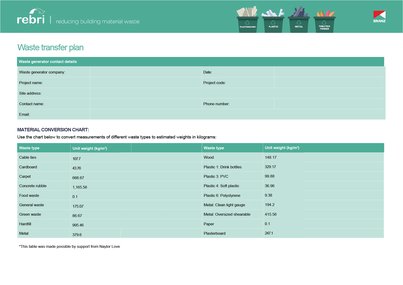BRANZ House Insulation Guide 6th edition v2.7 PC (03 December 2025)
This Microsoft Excel (.xlxs) 25MB download of BRANZ House Insulation Guide 6th edition is for PC users.
Updates:
- Further fix to error where the R-value for slab floors were higher than they should have been when adding floor topper insulation
- New images for timber framed floors
- A worksheet added which provides simplifications to help with calculation and modelling for steel framed walls
The guide is now in two parts:
- The tables of construction R-values for common construction options for compliance under H1/AS1 and H1/VM1 5th edition
- The accompanying House Insulation Guide text [PDF] for guidance on insulation to meet or exceed H1 AS/1 and H1/VM1 5th edition.
BRANZ House Insulation Guide 6th edition v2.7 MAC (03 December 2025)
This Microsoft Excel (.xlxs) 25MB download of BRANZ House Insulation Guide 6th edition is for MAC users.
Updates:
- Further fix to error where the R-value for slab floors were higher than they should have been when adding floor topper insulation
- New images for timber framed floors
- A worksheet added which provides simplifications to help with calculation and modelling for steel framed walls
The guide is now in two parts:
- The tables of construction R-values for common construction options for compliance under H1/AS1 and H1/VM1 5th edition
- The accompanying House Insulation Guide text [PDF] for guidance on insulation to meet or exceed H1 AS/1 and H1/VM1 5th edition.
BRANZ Schedule Method Tool v8 (December 2025)
This Microsoft Excel (.xlsx) tool applies the schedule method of H1/AS1 5th edition amendment 1 which can be used to show compliance until 26 November 2026.
Features:
- Introduction
- Schedule method
More information here.
Note that the schedule method has been removed from the 6th Edition of the Acceptable Solution H1/AS1. The schedule method for H1/AS1 5th Edition Amendment 1 can only be used to show compliance before 27 November 2026. Compliance with H1/AS1 6th Edition after 26 November 2026 will require the use of the Calculation Method.
BRANZ House Insulation Guide 6th edition v2.7 ONLINE (03 December 2025)
This Microsoft Excel (.xlxs) 25MB download of BRANZ House Insulation Guide 6th edition is for PC and MAC users of Microsoft 365 [ONLINE]
Updates:
- Further fix to error where the R-value for slab floors were higher than they should have been when adding floor topper insulation
- New images for timber framed floors
- A worksheet added which provides simplifications to help with calculation and modelling for steel framed walls
The guide is now in two parts:
- The tables of construction R-values for common construction options for compliance under H1/AS1 and H1/VM1 5th edition
- The accompanying House Insulation Guide text [PDF] for guidance on insulation to meet or exceed H1 AS/1 and H1/VM1 5th edition.
Once you have downloaded this version open it using Excel on Microsoft 365
BRANZ Calculation Method Tool v10 Basic (December 2025)
This basic Microsoft Excel (.xlsx) tool checks for compliance of housing and small buildings with the calculation method of H1/AS1 6th edition.
Features:
- Introduction
- Calculations and Results
More information here.
BRANZ Calculation Method Tool v9 Full (December 2025)
This Microsoft Excel (.xlsx) tool automatically applies the calculation method of H1/AS1 6th edition and generates a results page that can be used to demonstrate compliance.
Features:
- Introduction
- Project details
- Slab floors
- Other floors
- Roof
- Skylights
- Walls
- Glazing (walls and doors)
- Doors (opaque)
- Results
More information here.
REBRI On-site waste sorting signage kit (PDF) - Chinese (Simplified)/English
It is always helpful to start early when it comes to promoting good waste behaviours. This bilingual Chinese (Simplified)/English 'print your own' signage kit is ideal for labelling and sorting your on-site waste materials effectively.
Included in this REBRI On-site waste sorting signage kit you will find a 16-page set of A3 posters that include:
- Sorting made simple, a guide to set you up for on-site success
- Treated timber
- Untreated timber
- General metal
- Glass
- Flooring
- Plasterboard
- Cardboard
- Polystyrene
- Plastic (hard)
- Plastic (wrap and film)
- Concrete
- Aggregate
- Landfill
- Paint
- Build your own (a blank for you to customise)
These PDF signs have a QR code to access the BRANZ Resource recovery map to find your nearest facilities based on your search address.
REBRI On-site waste sorting signage kit (PDF) - Tongan/English
It is always helpful to start early when it comes to promoting good waste behaviours. This bilingual Tongan/English 'print your own' signage kit is ideal for labelling and sorting your on-site waste materials effectively.
Included in this REBRI On-site waste sorting signage kit you will find a 16-page set of A3 posters that include:
- Sorting made simple, a guide to set you up for on-site success
- Treated timber
- Untreated timber
- General metal
- Glass
- Flooring
- Plasterboard
- Cardboard
- Polystyrene
- Plastic (hard)
- Plastic (wrap and film)
- Concrete
- Aggregate
- Landfill
- Paint
- Build your own (a blank for you to customise)
These PDF signs have a QR code to access the BRANZ Resource recovery map to find your nearest facilities based on your search address.
REBRI On-site waste Sorting Signage Kit (PDF) - Chinese (Traditional)/English
It is always helpful to start early when it comes to promoting good waste behaviours. This bilingual Chinese (Traditional)/English 'print your own' signage kit is ideal for labelling and sorting your on-site waste materials effectively.
Included in this REBRI On-site waste sorting signage kit you will find a 16-page set of A3 posters that include:
- Sorting made simple, a guide to set you up for on-site success
- Treated timber
- Untreated timber
- General metal
- Glass
- Flooring
- Plasterboard
- Cardboard
- Polystyrene
- Plastic (hard)
- Plastic (wrap and film)
- Concrete
- Aggregate
- Landfill
- Paint
- Build your own (a blank for you to customise)
These PDF signs have a QR code to access the BRANZ Resource recovery map to find your nearest facilities based on your search address.
REBRI On-site waste sorting signage kit (PDF) - Samoan/English
It is always helpful to start early when it comes to promoting good waste behaviours. This bilingual Samoan/English 'print your own' signage kit is ideal for labelling and sorting your on-site waste materials effectively.
Included in this REBRI On-site waste sorting signage kit you will find a 16-page set of A3 posters that include:
- Sorting made simple, a guide to set you up for on-site success
- Treated timber
- Untreated timber
- General metal
- Glass
- Flooring
- Plasterboard
- Cardboard
- Polystyrene
- Plastic (hard)
- Plastic (wrap and film)
- Concrete
- Aggregate
- Landfill
- Paint
- Build your own (a blank for you to customise)
These PDF signs have a QR code to access the BRANZ Resource recovery map to find your nearest facilities based on your search address.
REBRI On-site waste sorting signage kit (PDF) - Tagalog/English
It is always helpful to start early when it comes to promoting good waste behaviours. This bilingual Tagalog/English 'print your own' signage kit is ideal for labelling and sorting your on-site waste materials effectively.
Included in this REBRI On-site waste sorting signage kit you will find a 16-page set of A3 posters that include:
- Sorting made simple, a guide to set you up for on-site success
- Treated timber
- Untreated timber
- General metal
- Glass
- Flooring
- Plasterboard
- Cardboard
- Polystyrene
- Plastic (hard)
- Plastic (wrap and film)
- Concrete
- Aggregate
- Landfill
- Paint
- Build your own (a blank for you to customise)
These PDF signs have a QR code to access the BRANZ Resource recovery map to find your nearest facilities based on your search address.
REBRI On-site waste sorting signage kit (PDF) - Māori/English
It is always helpful to start early when it comes to promoting good waste behaviours. This bilingual Māori/English 'print your own' signage kit is ideal for labelling and sorting your on-site waste materials effectively.
Included in this REBRI On-site waste sorting signage kit you will find a 16-page set of A3 posters that include:
- Sorting made simple, a guide to set you up for on-site success
- Treated timber
- Untreated timber
- General metal
- Glass
- Flooring
- Plasterboard
- Cardboard
- Polystyrene
- Plastic (hard)
- Plastic (wrap and film)
- Concrete
- Aggregate
- Landfill
- Paint
- Build your own (a blank for you to customise)
These PDF signs have a QR code to access the BRANZ Resource recovery map to find your nearest facilities based on your search address
REBRI On-site waste sorting signage kit (PDF) - English
It is always helpful to start early when it comes to promoting good waste behaviours. This 'print your own' signage kit is ideal for labelling and sorting your on-site waste materials effectively.
Included in this REBRI On-site waste sorting signage kit you will find a 16-page set of A3 posters that include:
- Sorting made simple, a guide to set you up for on-site success
- Treated timber
- Untreated timber
- General metal
- Glass
- Flooring
- Plasterboard
- Cardboard
- Polystyrene
- Plastic (hard)
- Plastic (wrap and film)
- Concrete
- Aggregate
- Landfill
- Paint
- Build your own (a blank for you to customise)
These PDF signs have a QR code to access the BRANZ Resource recovery map to find your nearest facilities based on your search address.
Bilingual signage coming soon in 2025
Webinar: Plumbing & Drainage Design - Water supply and stormwater systems
It’s increasingly important to design water supply and stormwater systems that meet building users’ needs and use water, energy and materials efficiently.
This webinar dives into:
- key considerations for water supply systems, stormwater systems and water re-use.
- emerging trends and common issues with water supply and stormwater systems – gain practical guidance on how they can be addressed.
- opportunities for water re-use including retention versus detention, fixtures that can use grey water, rainwater for potable use and types of tanks.
Please click here to access the presentation slides
Please note: that access to this webstream will expire after 90 days
Webinar: Plumbing & Drainage Design - Foul water
This webinar offers valuable insights into the key pitfalls and common challenges faced when developing plans that comply with the Building Code – G13 Foul water. By understanding essential design principles and pipework requirements, you can confidently navigate the increased demands on architects and designers.
Design correctly from the outset to save time, reduce costs, and prevent future issues
- Pitfalls revealed – we share top tips for getting drainage plans right the first time after canvassing hundreds of requests for further information (RFI) from building consent authorities across Aotearoa.
- Essentials refresher – practical guidance on designing safe and compliant systems that have an efficient layout, with minimal impact on the building structure
Webinar: Plumbing and Drainage Design - Code changes
- G12 Water supplies –changes to temperature, lead in plumbing and water system - components and many more
- G13 Foul water – gully dishes, junctions in graded pipes
- AS/NZS 3500 – water services, clearances, junctions, marking pipework and heated circulatory systems, rainfall intensity and preformed slumps
- Hydraulics and water flow through plumbing systems
- Heat transfer – including insulation and energy efficiency
- Foul water fundamentals – gravity, ventilation, friction and velocity
- Materials – expansion, contraction, corrosion and durability.
REBRI Waste minimisation plan (PDF)
The waste minimisation plan is a helpful tool that can assist you in a few different ways.
This plan provides a framework for:
- Outlining who is responsible for managing waste on site
- Setting waste minimisation goals
- Recording the different types and amounts of waste from your project
- Describing recycling/reuse methods for each material
- Identifying waste destinations and how it is being transported
- Monitoring your progress
- Describing communication and training used to support and encourage participation from everyone on site.
- Reviewing the project – you can identify what went well and what can be improved next time.
We recommend using this REBRI Waste minimisation plan with Adobe PDF reader for data capture.
Updated: 24 September 2024
REBRI Waste transfer plan (PDF)
The waste transfer plan is a useful tool that can help you track your construction waste. Tracking construction waste helps you reduce waste generation, decrease disposal where possible, and increase reuse and recycling.
With the REBRI waste transfer plan, you'll have a handy document to keep track of the different types of waste you generate and where it's being sent. Plus, there's a material conversion chart included to help you easily convert different waste types into estimated weights in kilograms. It's a great way to stay organized and make better decisions about managing your construction waste.
We recommend using this REBRI Waste transfer plan with Adobe PDF reader for data capture.
Seminar: Building for our changing climate
In this seminar series we’re diving deep into design and construction options that will enable residential buildings to perform better in the face of long-period intense rainfall, surface flooding, high winds, increasing temperatures, and more.
Plumbing and Drainage Guide 3rd edition
Print version available now!
This guide explains the general principles of the plumbing codes and standards for sanitary plumbing in Aotearoa New Zealand. Issues such as backflow prevention, protection from scalding and explosion by hot water installations and the use of air admittance valves are explained in clear and simple text. This edition was updated and released in April 2024 to reflect recent changes to AS/NZS 3500 Plumbing and drainage standards and amendments to the New Zealand Building Code acceptable solutions for clauses G12 Water supplies and G13 Foul water.
Disclaimer: Please note that our publications reflect the regulations and best practices on the date of release, which is shown on the publication. As regulations and industry standards evolve, we always recommend that our publications be read in conjunction with the latest building code clauses and standards.




